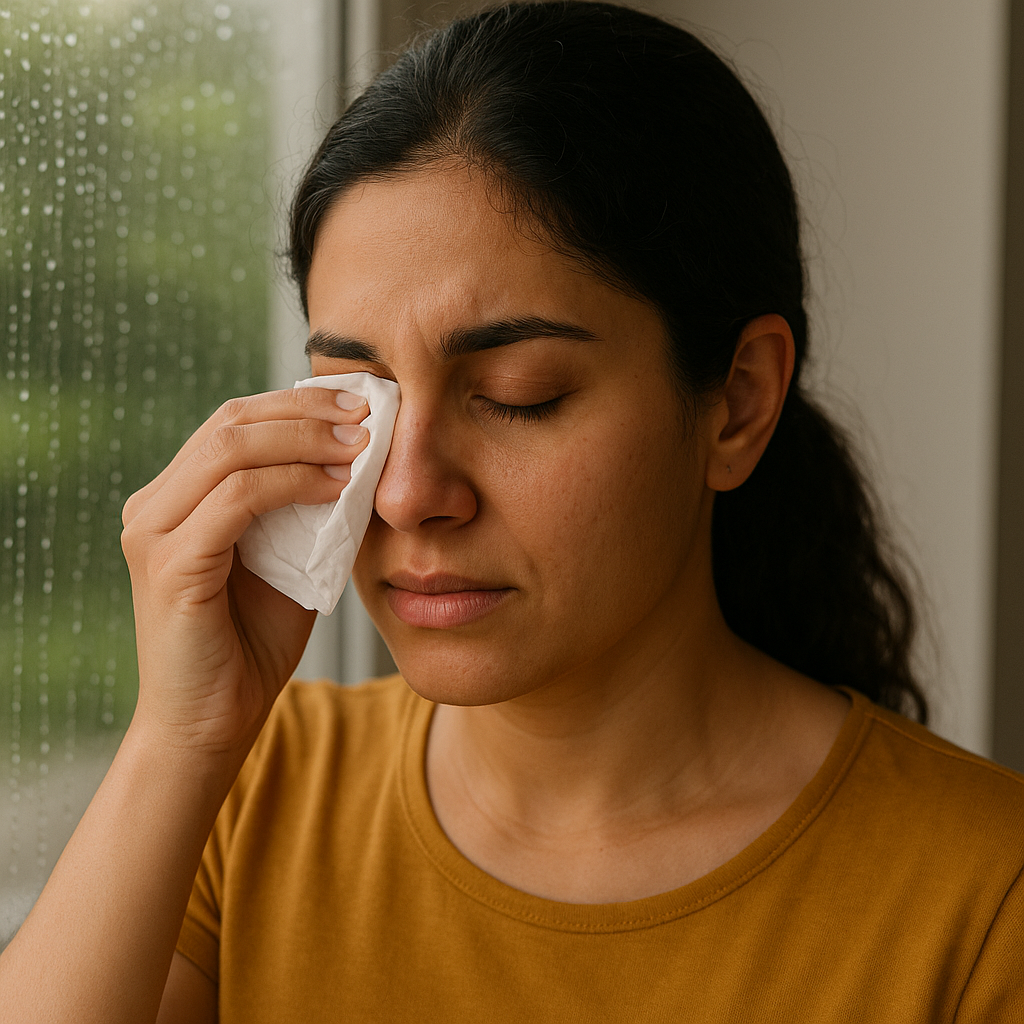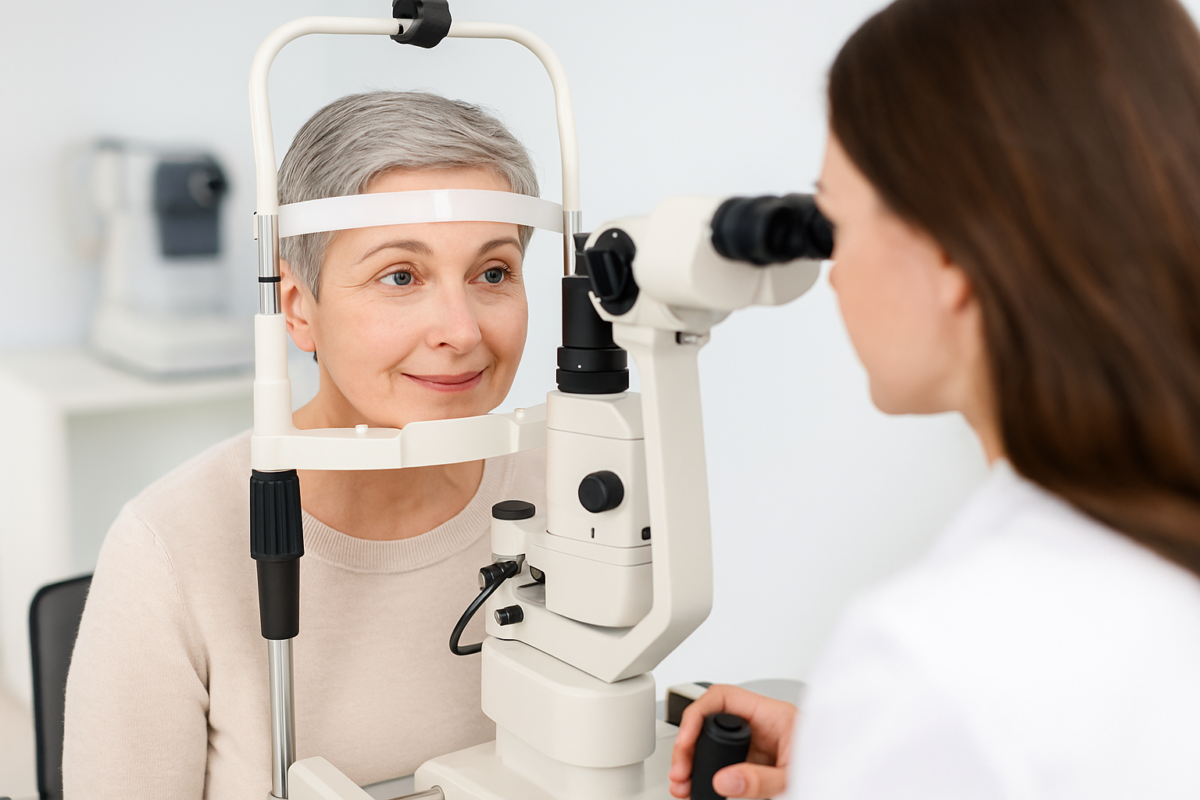In today’s hyper-connected world, students are constantly glued to screens, be it for online classes, e-books, assignments, or late-night YouTube tutorials. While the pursuit of knowledge is always admirable, the toll it takes on the eyes often goes unnoticed until it’s too late.
Digital eye strain, dry eyes, blurred vision, and headaches have become increasingly common among students of all ages. The good news? By making simple, vision-friendly changes to your study habits, you can safeguard your sight while enhancing your productivity.
Here’s a detailed guide for students on how to “Study Smart and See Sharp”, because your eyes are just as important as your grades.
- Understand the Risks: How Studying Affects Your Eyes
Spending long hours buried in textbooks or glued to digital screens can take a serious toll on your eyes. Whether you’re a school student, a college-goer, or a competitive exam aspirant, your study routine can unknowingly strain your vision in several ways:
- Eye fatigue from continuous focus and concentration
- Dry eyes, as screen time often reduces our blink rate
- Blurry vision caused by prolonged near work
- Frequent headaches, triggered by poor lighting or incorrect posture
- Higher risk of myopia (nearsightedness), particularly among children and young adults
Given these risks, it’s essential to cultivate eye-friendly study habits early on. Taking proactive steps now can help protect your eyesight for the long term while also improving study comfort and productivity.
- Follow the 20-20-20 Rule
This is the golden rule for screen users:
Every 20 minutes, look at something 20 feet away for at least 20 seconds.
This allows your eyes to relax, reducing strain from constant near-focus work. You can even set a reminder app or timer to ensure you follow it consistently during long study sessions.
- Create a Vision-Friendly Study Space
Your study environment plays a big role in your eye health. Here’s how to make it ideal:
- Good Lighting: Use bright, natural light during the day and warm desk lamps at night. Avoid harsh overhead lights or reading in the dark.
- Anti-glare screens: If you’re using a laptop or tablet, invest in an anti-glare screen protector to reduce strain.
- Correct screen position: For optimal ergonomics, place your monitor at arm’s length and just below eye level.
Students in Kerala looking for professional help can always consult experts in eye disease treatments in Kerala to get customized advice on improving their visual ergonomics.
- Blink More, Blink Often
Blinking keeps the surface of your eyes moist. But while focusing, especially on screens, we tend to blink less, leading to dryness and irritation.
Train yourself to blink intentionally during your study time. You can even practice slow blinking exercises every hour — close your eyes gently, hold for 2 seconds, then open slowly.
- Choose Blue Light Filters or Glasses
Blue light emitted from screens can disrupt sleep cycles and cause digital eye strain. Consider:
- Turning on Night Mode or Blue Light Filters on your devices.
- Wearing blue light-blocking glasses, especially during nighttime studies.
This simple change can make a significant difference in preventing screen-related vision issues.
- Maintain the Right Posture
How you sit also affects your eye health. Hunching over your screen or getting too close can leave your eyes tired and your neck sore.
- Keep your back straight.
- Place feet flat on the ground.
- Maintain about 16–24 inches distance between your eyes and the screen or book.
For students in Thrissur, the best eye care clinic in Thrissur can also provide vision therapy and ergonomic consultations to correct posture-related vision issues.
- Take Frequent Breaks
Don’t cram for 3–4 hours straight. Instead, follow a Pomodoro technique: 25 minutes of focused study followed by a 5-minute break. Use the break to stand up, stretch, or look outside — give your eyes something else to focus on.
This not only helps your eyes but also boosts memory and productivity.
- Stay Hydrated and Eat Vision-Boosting Foods
Dehydration leads to dry eyes. Make sure you drink enough water throughout the day.
Also, include foods rich in:
- Vitamin A: Carrots, sweet potatoes
- Omega-3 fatty acids: Fish, walnuts
- Lutein & Zeaxanthin: Leafy greens, eggs
- Zinc: Dairy, pumpkin seeds
A healthy diet supports your eyes’ natural protective layers and helps prevent long-term eye conditions.
- Use Proper Study Materials
Poorly printed textbooks or low-contrast notes strain your eyes. Always:
- Use high-quality printed materials.
- Choose black text on a white background for digital reading.
- Avoid reading fine print in dim lighting.
Using e-readers with e-ink displays is also gentler on the eyes than traditional backlit screens.
- Schedule Regular Eye Checkups
Students often ignore minor vision issues until they begin to interfere with their studies. If you’re experiencing:
- Headaches
- Eye strain
- Blurred or double vision
- Difficulty concentrating- then it’s time to see an eye specialist.
If you’re located in Kerala, there are excellent options for eye disease treatments in Kerala that offer advanced diagnostic facilities, myopia control programs, and student-friendly eye care plans.
Residents of Thrissur can access world-class treatment at the best eye care clinic in Thrissur, which is equipped to handle everything from simple eye strain to complex pediatric eye conditions.
- Don’t Ignore Symptoms
Even if you’re young, symptoms like:
- Redness
- Watering
- Frequent rubbing
- Sensitivity to light- shouldn’t be ignored. These can be early signs of dry eye syndrome, allergic conjunctivitis, or even progressive myopia.
Early intervention is key to preventing long-term damage.
See Better, Learn Better.
Your eyes are your windows to the world — and your textbooks, PDFs, and study notes! As a student, protecting your vision is not just about comfort; it’s about sustaining your learning ability for the long run.
Make these eye-friendly habits part of your everyday study routine. Not only will your eyes thank you, but your grades might just see a boost too.
And if you’re looking for professional guidance, don’t hesitate to reach out to the best eye care clinic in Thrissur or explore eye disease treatments in Kerala. Investing in your vision today is investing in your future.
Stay sharp. Study smart. See clearer — every day.




